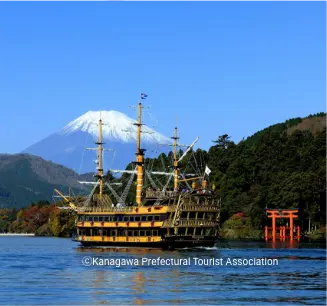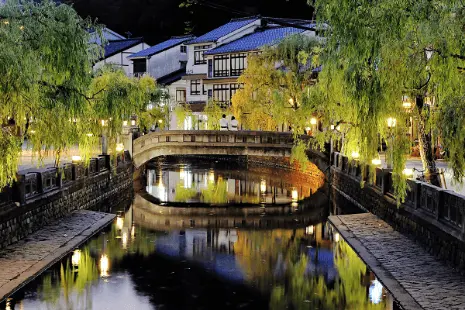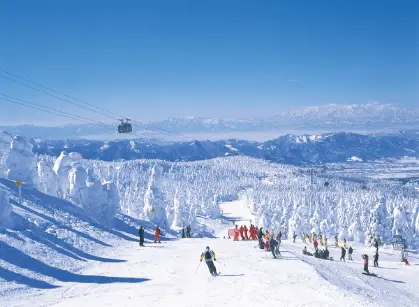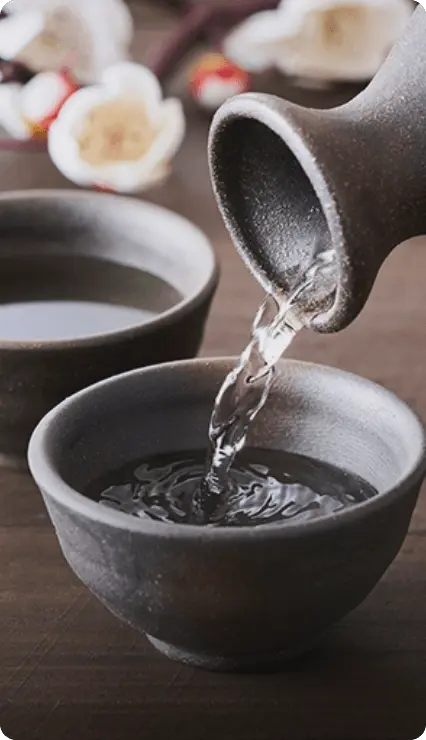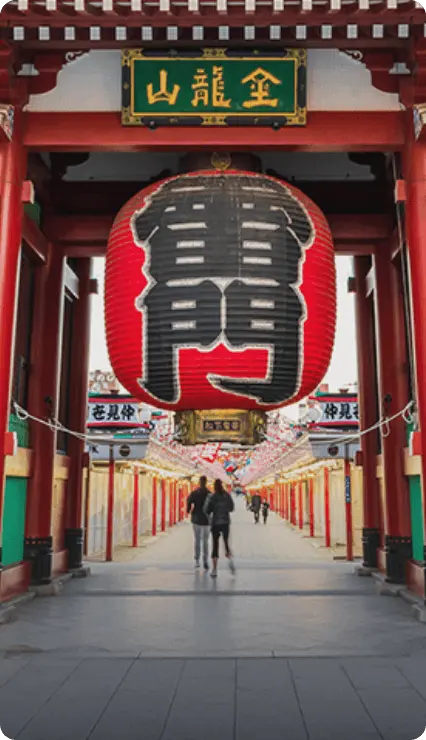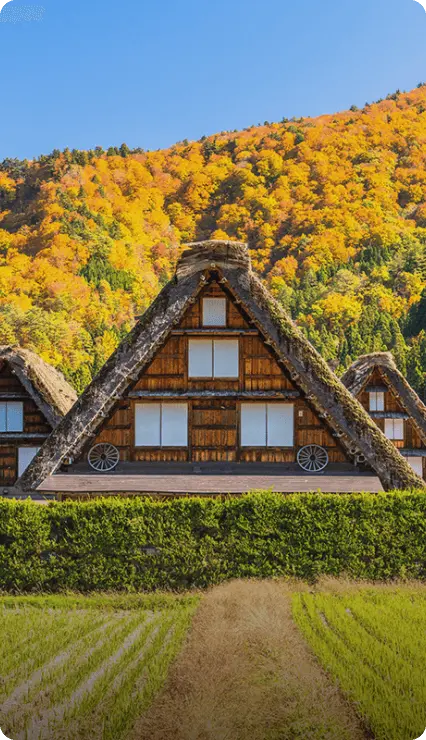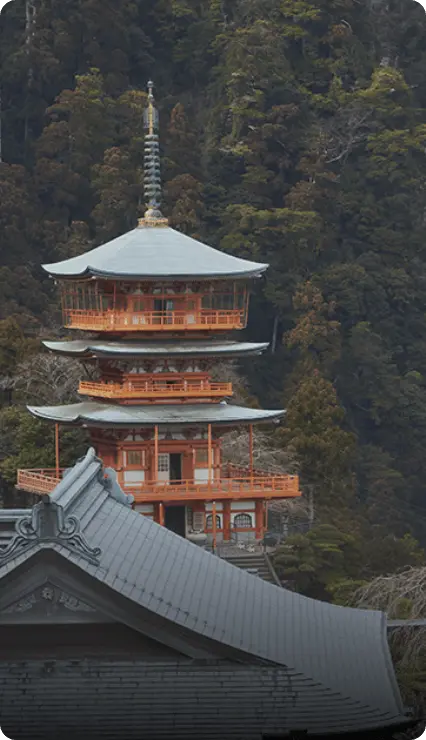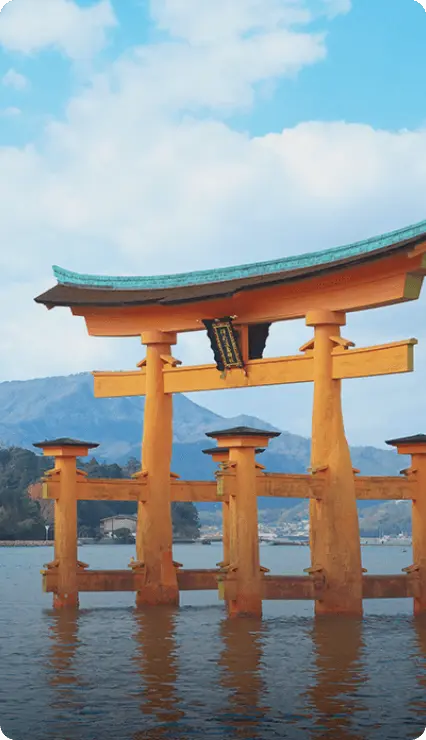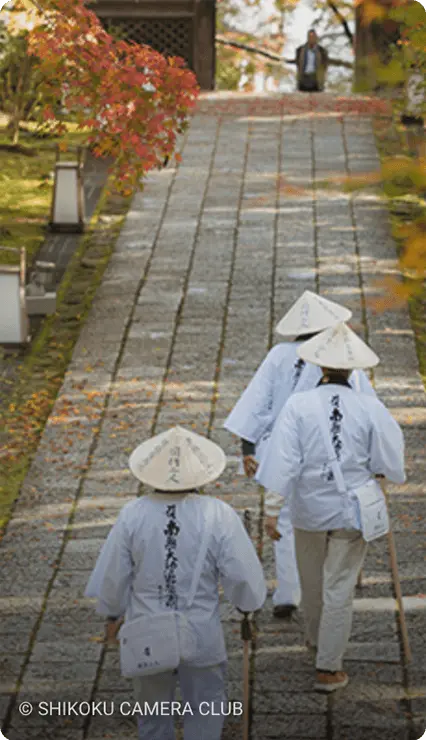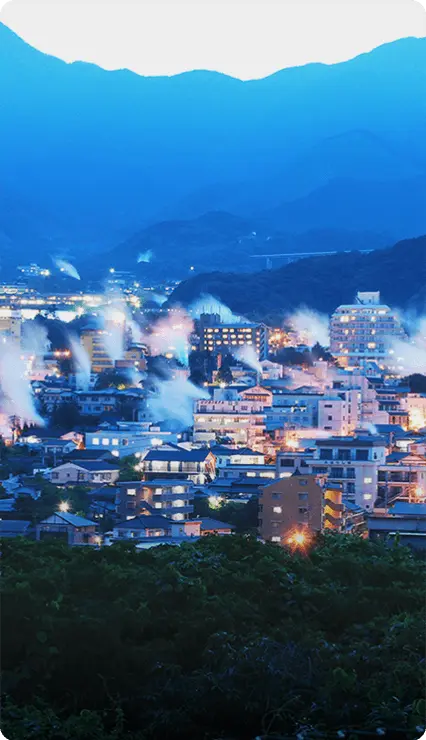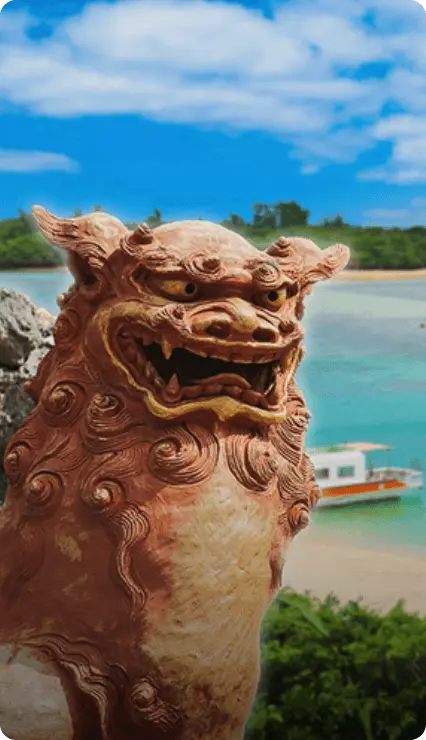Explore Japan
through the Four SeasonsSpringGreater Tokyo / Central Japan / Kansai

Explore Japan's Spiritual Heartland This Spring
This comprehensive tour incorporates some of Japan's most iconic cultural traditions and breathtaking natural sights. Discover Buddhism, learn about Japanese food culture and enjoy the season's abundant flowers amongst the mild spring weather to explore some of the region's wild wonders.
Traverse the Noto Peninsula by bike, enjoy a Noh theater performance in Osaka, explore ancient temples, and scour historic streets at the iconic Tsukiji Market. On this unique tour, you'll gain a deeper understanding of Japanese life and culture and leave with a profound admiration for the country's natural landmarks.

- 1
-

1
Take a Tsukiji Outer Market Tour
Tokyo
A must-see sight in Tokyo, Tsukiji Market is an all-out sensory experience. While the world-famous central wholesale fish market has relocated, the current Tsukiji Outer Market has lost none of its charms, with shops and stalls selling produce from across Japan alongside intimate restaurants serving the finest seafood in the city. During spring, red sea bream (madai), greater amberjack (kanpachi) and skipjack tuna (katsuo) are in season, so you'll likely see multiple restaurants pushing these seafood varieties as recommended seasonal dishes.
Take a tour of the Tsukiji Outer Market to experience Japanese food culture first-hand. Many tour options are available, including walking tours and others focusing specifically on the vast array of food and drink on offer at the market. You can explore the market on a tour at various times of the day. However, prior booking is essential as Tsukiji Outer Market tours are often in high demand.-
20mins
by train from Tsukijishijo Station to Shinjuku Station (via Toei Subway Oedo Line) -
75mins
by train from Shinjuku Station to Hakone-Yumoto Station (via Odakyu Odawara Line) - or
-
85mins
by car from Tsukiji-shijo Station to Hakone-Yumoto Station (alternative)

2
Explore Hakone
Kanagawa
Located close to Mt. Fuji, Japan's highest mountain, Hakone is one of the country's top tourist resorts. Part of the Fuji-Hakone-Izu National Park and only 75 minutes from central Tokyo by train, visitors to Hakone are spoiled for choice during spring. From pristine hot springs to pleasant lakeside rambles, there are plenty of outdoor activities to enjoy amongst spring flowers. No visit to Hakone is complete without a visit to the beautiful Lake Ashinoko to take in spectacular views of Mt. Fuji.
For culture lovers, Hakone plays host to a wealth of museums and monuments. Discover the fleeting beauty of the iconic Odawara Castle surrounded by cherry blossoms in full bloom or explore the Hakone Open Air Museum with its popular Picasso Pavilion and eclectic outdoor sculptures.
With breathtaking scenery and a wide variety of activities, Hakone is an ideal location for a touch of respite and relaxation away from the hustle and bustle of Tokyo.-
80mins
by car from Hakone-Yumoto to Lake Kawaguchiko - or
-
70mins
by car from Lake Ashinoko to Lake Kawaguchiko (alternative)
-
- 2
-

Hoshino Resorts 3
Glamping at the Foot of Mt. Fuji
Yamanashi
Glamping, especially during the spring months, has become incredibly popular in Japan. Demand for outdoor sports and activities, in general, has increased as more people recognize the stunning natural sights on their doorstep.
There are several glamping destinations around Mt. Fuji in Yamanashi Prefecture. One of the best is HOSHINOYA Fuji, which brings a hearty dose of glamor and luxury to the traditional camping experience.
Located in a thick, verdant forest close to the shores of Lake Kawaguchiko with unparalleled views of Mt. Fuji, HOSHINOYA Fuji offers luxurious accommodations in an outdoor setting. The cherry blossoms planted across resort grounds offers an exceptionally beautiful outdoor experience. It's easy to forget this is a glamping resort, as the wealth of amenities and exquisite attention to detail wouldn't be out of place in a five-star hotel, albeit in the wilderness.-
85mins
by highway bus from Lake Kawaguchiko Station to Mishima Station -
130mins
by shinkansen from Mishima Station to Shin-Osaka Station -
4mins
by express train from Shin-Osaka Station to Osaka Station (via Kintetsu Kyoto Line) -
10mins
by foot from Osaka Station to Higashi Umeda Station -
6mins
by subway from Higashi Umeda Station to Tanimachiyonchome Station (via Tanimachi Line)
-
- 3
-

4
See a Noh Performance in Osaka
Osaka
Noh, Japan's oldest and most acclaimed performing art, has been awarded Intangible Cultural Heritage status by UNESCO. Still popular today, watching Noh up close has been described as a transcendent experience and consistently draws in audiences from around Japan and beyond.
One of the best places to experience the art form in Osaka is at Yamamoto Noh Theater. Founded in 1927 in the Osaka Castle Bukeyashiki (samurai residence) district, this theater developed as a centerpiece of social and cultural life in the Senba area. Ever since, it has been dedicated to the promotion and Noh theater for over 95 years. Today, the Yamamoto Noh Theater provides English language explanatory materials for foreign visitors, alongside hands-on Noh experiences and theater tours.-
60mins
by train from Osaka Station to Nara Station (transfer to the Yamatoji Line at Tennoji or Shin-Imamiya Station). -
10mins
by bus from Nara Station to Todaiji Temple

Nara Visitors Bureau 5
The Shuni-e Ceremony
Nara
Shuni-e is a ceremony that originally began in 752 and has been held every year for more than 1270 years. The solemn ceremony is held annually from early- to mid-March at Todaiji Temple, a World Heritage site in Nara Prefecture, to pray for a year of happiness starting each spring.
During the ceremony, torches are lit every night from March 1–14, and at dawn on March 13, water is drawn from wells and presented as a sacred offering. It's an unforgettable spectacle that draws people from all over the world.-
45mins
by train from Nara Station to Kyoto Station -
70mins
by bus from Kyoto Station to Hiei Sancho
-
- 4
-

6
Experience a Temple Stay at Enryaku-ji's Shukubo on Mt. Hieizan
Shiga
Building on your visit to Todaiji Temple, delve deeper into Japanese Buddhism with a stay at Shukubo, the monk's quarters, at Enryakuji Temple on Mt. Hiei in Shiga Prefecture.
Surrounded by tranquil, lush forests of cherry blossoms and freshly sprouted momiji leaves, you'll experience daily life in a temple lodging during your overnight stay this spring. Enjoy vegetarian meals prepared in the shojin ryori style and attend services in the temple. Witness monks undertaking their daily tasks and marvel at this historic temple founded in 788.-
70mins
by bus from Enryakuji Bus Center to Kyoto Station -
90mins
by train from Kyoto Station to Fukui Station (JR Limited Express) -
30mins
by bus from Fukui Station to Eiheijimon Mae (via Tokyuu Eiheiji Liner)
-
- 5
-

7
Experience Zen at Eiheiji Temple
Fukui
Zen Buddhism plays a critical role in contemporary Japanese culture despite its ancient roots. One of the best places in Japan to learn more about it is at the Eiheiji Temple in Fukui Prefecture.
Established in 1244, Eiheiji still plays an integral part in Zen Buddhist culture, and in the local area, the temple has become a popular destination for both domestic and international tourists. Experience firsthand the atmosphere of zazen meditation and hear the monks who live and practice in the temple recite magnificent sutras.-
30mins
by bus from Eiheiji to Fukui Station -
50mins
by train from Fukui Station to Kanazawa Station (JR Limited Express) -
40mins
by train from Kanazawa Station to Takaoka Station (via IR Ishikawa Tetsudo) -
20mins
walk from Takaoka Station to Kanayamachi
-
- 6
-

8
Discover Historic Kanayamachi
Toyama
Time appears to have stood still in many of Japan's most historic towns and villages. From traditional crafts still thriving and perfectly preserved architecture, visiting one of Japan's traditional communities is like stepping back into the past.
In Toyama Prefecture, you'll find the charming town of Kanayamachi, which is part of Takaoka City. Formerly an affluent metal-casting town, Kanayamachi is a living museum today.
Since the 1600s, when a feudal lord introduced model casting production to put the town on the map, Kanayamachi has been the beating heart of Takaoka's model casting industry. Today, visitors can stroll along the old town's stone pavements, flanked by traditional lattice-front houses, and explore the Takaoka Casting Museum to get a real understanding of how Kanayamachi's residents lived centuries before.
A 10-minute walk from Kanayamachi along Yamachosuji, you'll find a series of quaint cafes and workshops. Here you can have a go at traditional model casting for yourself.-
60mins
by car from Kanayamachi to Notojima

9
Cultural cycling tour on Notojima Island
Ishikawa
After exploring the traditional streets of Kanayamachi, travel to Ishikawa Prefecture's Notojima Island to explore the lush countryside of Japan with a local guide. Steeped in traditional Japanese culture, the people of Notojima have long lived in harmony with both the land and sea. For centuries, residents have made a sustainable living through fishing and farming, and today, you can still observe these defining lifestyles. If you are looking for an adventure that transcends typical tourism and offers a deeper connection to Japan, be sure to join a Notojima cycling tour and zip along the wildflower speckled landscape.
This cherished island showcases the concepts of Satoyama and Satoumi, both recognized as Globally Important Agricultural Heritage Systems (GIAHS) by the United Nations. The term Satoyama refers to a mosaic of social-ecological systems formed in an area, such as villages and farmlands existing in harmony, and Satoumi refers to coastal areas where the sea is closely connected to residents' lives. Notojima Island's landscapes (Satoyama) and seascapes (Satoumi) are filled with wonders in every season, offering unique insights into local livelihoods. Cycle around the island with a local guide, connect with islanders and discover a culture that flows with nature's rhythms.
*Please check the latest information before visiting this area. -
Explore Japan
through the Four Seasons
Hokkaido
Hokkaido's vast, sweeping landscapes and cultural history will provide visitors with a deeper understanding of Japan's varied diasporas. Outdoor adventures, scenic wintertime excursions and meaningful experiences with Japan's indigenous people are just a few of the reasons Hokkaido is such a wonderful destination.












Hokkaido

Tohoku

Greater Tokyo

Central Japan

Kansai

San'in

Setouchi

Shikoku

Kyushu

Okinawa

